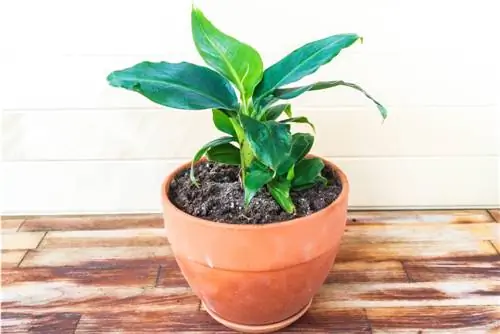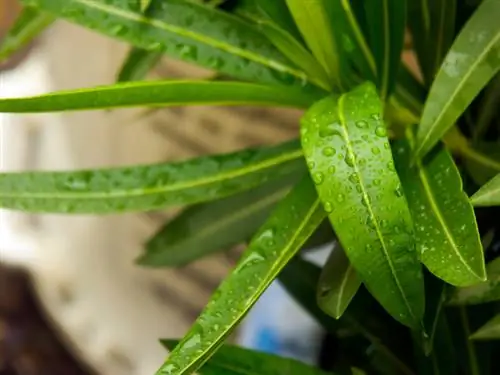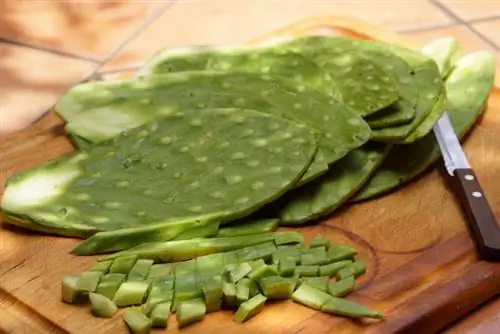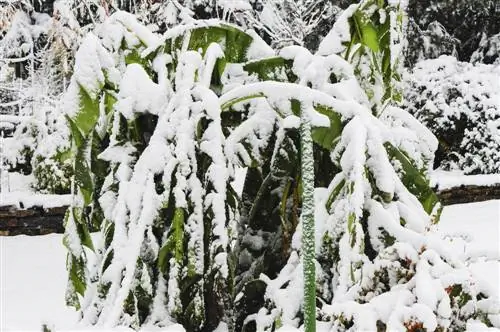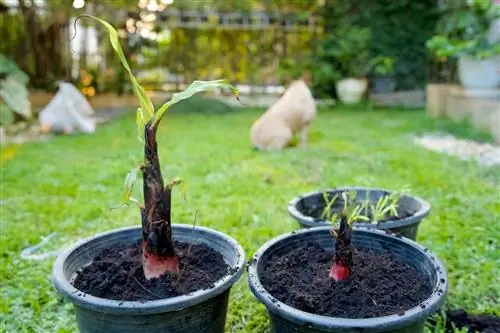- Author admin [email protected].
- Public 2023-12-16 16:46.
- Last modified 2025-01-23 11:22.
With the right concept, every banana plant can overwinter he althy and well. The recipe for success indoors is a combination of location and care. If the frost-hardy banana overwinters outside, winter protection is mandatory. These tips get to the heart of how you can successfully overwinter a banana in a pot and bed.
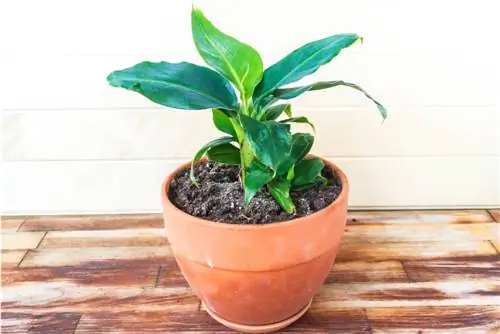
How can you properly overwinter banana plants?
To overwinter a banana successfully, cut back the shoots in autumn and choose the right location depending on the species: tropical bananas in bright, cool winter quarters, hardy fiber bananas outdoors with winter protection. Reduce water and nutrient supply during winter break.
Cutting bananas in autumn
The banana is a perennial. In fact, the powerful, fibrous, fleshy shoots do not become woody. In winter, the banana palm pulls in its pseudo-stems, takes a break in growth and sprouts again the next spring. Pruning before winter heralds a period of rest. This applies regardless of whether you overwinter your banana indoors in a pot or outside in the bed. How to do it right:
- Disinfect folding knife or large, sharp knife
- Cut back the shoots to a height of 30-50 cm, shorten the man-high banana to 50-100 cm
- Spin cuts with wood ash or rock dust for disinfection
Are you planning to overwinter your potted banana as a houseplant? Then you can skip pruning. The disadvantage of this approach is that it has a significantly shorter shelf life because your banana plant is not able to rest during the winter.
Overwinter tropical banana indoors
Edible banana (Musa paradisiaca) and other tropical banana species adorn balconies and terraces with their opulent splendor in summer. If the thermometer falls below 10° Celsius in autumn, the lower limit of cold tolerance has been reached. After the autumn pruning, the location is changed behind glass. How to properly overwinter a tropical banana:
Suitable winter locations
The banana plant wants bright, cool conditions at 12° to 15° Celsius to overwinter. These locations are shortlisted as winter quarters:
- Tempered winter garden
- Heated greenhouse
- Bright staircase
- Cool, light-filled bedroom
Overwintering as a houseplant is unfavorable. The combination of lack of light and cozy warm temperatures brings the tropical banana to the brink of ruin.
Care on the back burner
The water and nutrient supply in the winter quarters is reduced to a minimum. With this care you can overwinter a banana properly:
- If the soil is noticeably dry (finger test), water with lime-free water
- Do not fertilize cut-back bananas
- Fertilize uncut bananas every four weeks with liquid fertilizer at half the concentration
In cool, bright winter quarters, uncut banana plants tend to have brown leaf edges. As a preventative measure, spray the leaves regularly with lime-free water.
Japanese fiber banana outside with winter protection
The hardy Japanese fiber banana (Musa basjoo) can overwinter outside with the right winter protection. This is how it works:
- Cut pseudo-trunks back to waist height
- Build a winter box from wooden or polystyrene panels, secured with ropes or tension straps
- Fill in straw and press firmly
- Cover construction with breathable garden fleece
- Tighten the cover with cords or tension straps
Cut the shoots on the edge of the clump a few centimeters deeper than in the center. In this way, the cover rests on the winter box like a dome so that rain can run off easily.
Tip
Pre-winter pruning of a banana tree produces cuttings in abundance. The best option for disposal is compost. Beforehand, the fibrous shoots and thick leaves are chopped up so that busy compost worms don't swallow them. The thick-fleshed clippings are often useful as mulch on tree slices and in perennial beds.

